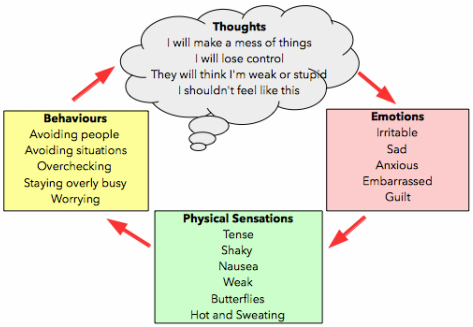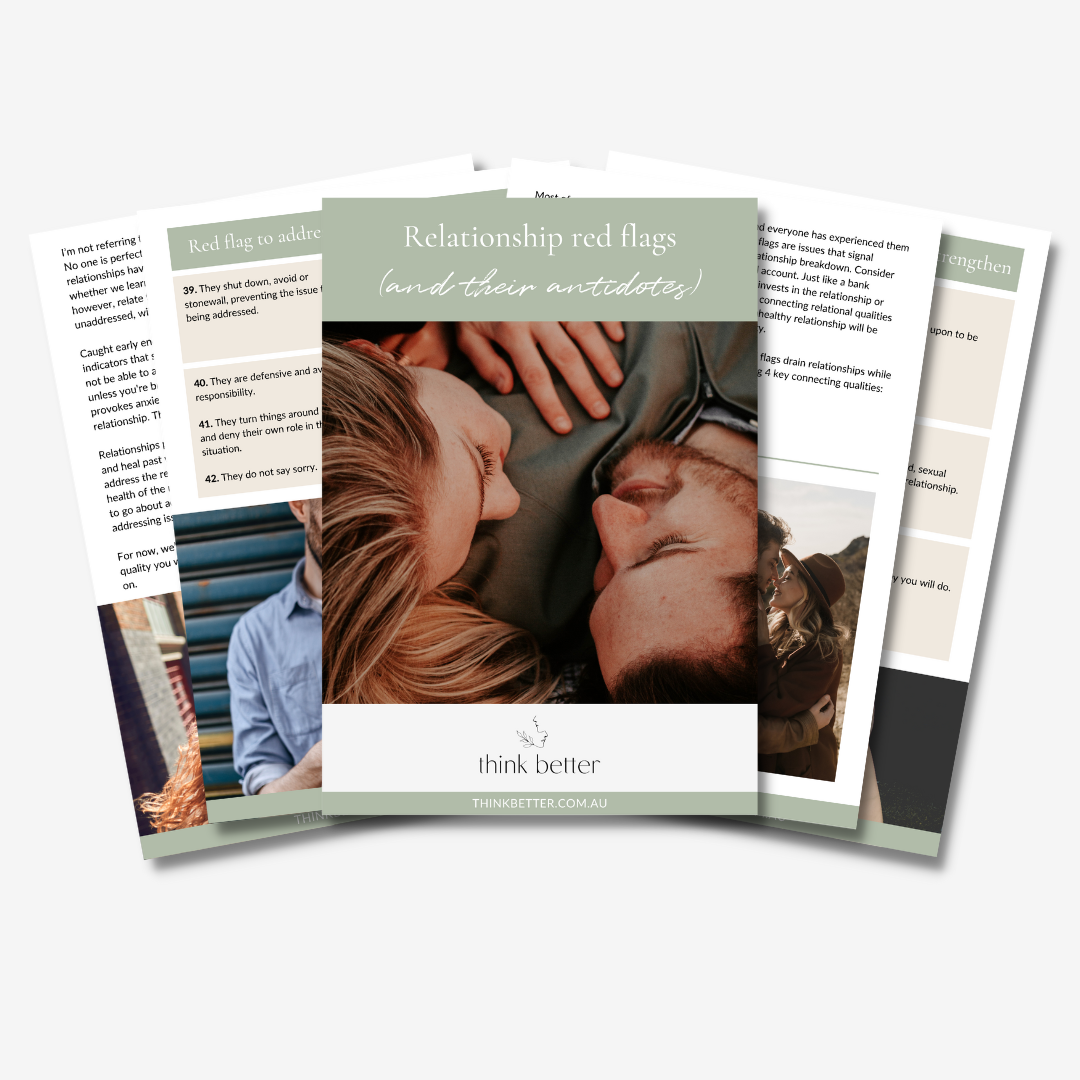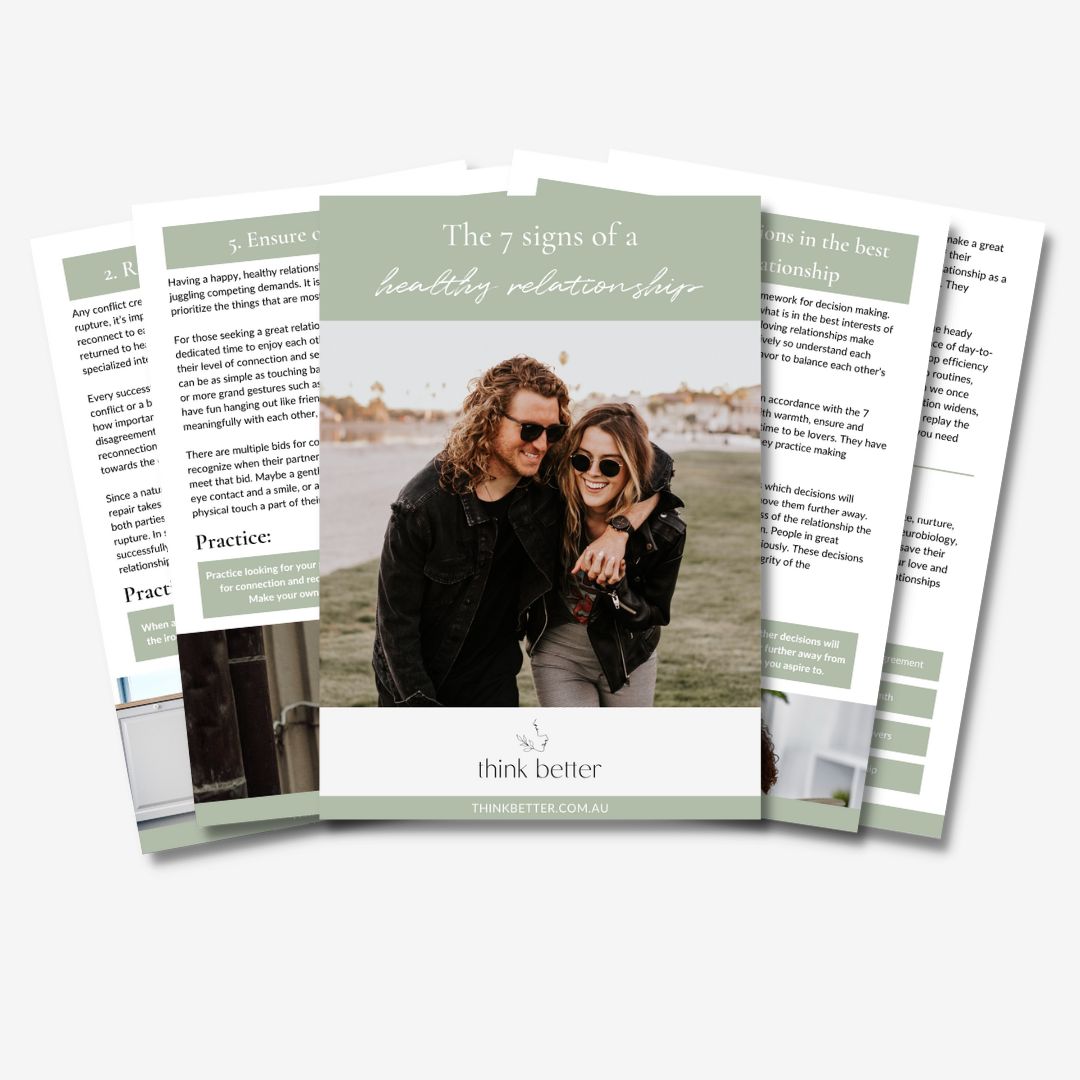Have you ever had that feeling of emotional reactivity when you go from zero to one hundred in a matter of seconds? We express this reactivity in different ways. “I was so triggered”, “It just really got to me”, “They made me so angry”. It is a feeling of being hooked by your feelings, triggered by a certain person or situation. We are hooked by a feeling that we don’t want to feel, and we then react to try to alleviate that feeling.
Our loved ones and work colleagues are often the ones we feel most hooked by, and we may react in ways that only make matters worse…but seem justified at the time. It’s problematic when it feels out of our control and happens regularly.
Hooking into emotional reactivity is fuelled by two things
Hooking into emotional reactivity is fuelled by two things – the desire to avoid uncomfortable feelings and ruminative thinking. Human beings operate from a perpetual cycle of thoughts, feelings and behaviour. Our feelings are impacted by our thoughts, our thoughts are impacted by our feelings and then we act. Despite the modern cult of analysis and reason, we are far from reasonable creatures.
Many of us suffer from habitual uncomfortable feelings that just keep arising no matter what we do. Certainly, everyone has experienced ruminative thinking where your inner self talk goes over and over things, especially when you don’t want to. Please do not feel dismayed about this – you are only human, and that is the nature of being human. But we do not need to be stuck in this reactive cycle. To unhook ourselves from our habitual negativity we must first deepen our understanding of the nature of feelings and the function of ruminative thought.
Feelings, or emotions, are sensations that manifest in the body.
Consider ‘e-motions’ as energy in motion within your physical body. They act as data for us to consider and act on if necessary. Each feeling has a size, shape, temperature, density, level of tension, and movement within the body. We then add a label to it such as joy or dread. For example, joy may feel like a light, expansive fizzing in your whole torso. Dread may sit like a heavy bowl in the pit of your stomach. We all have our own way of experiencing feelings and, like clouds in the sky, these sensations come and go.
Many people do not take the time to examine their feelings as physical sensations. The benefit of this is that we become more familiar with what we are feeling and when such feelings arise. When we have trouble managing our feelings, we have become hooked by the speed of them and the need to get rid of them. We are no longer in control and feel compelled by the feelings to act or think in certain ways. In trying to avoid the discomfort of being hooked we act rashly, withdraw, or ruminate on our thoughts – which strengthens the negativity. Like a fish on a hook, we try to avoid the discomfort by thrashing and, in doing so, create a whole lot more pain.
So how do we avoid being hooked by negative feelings?
If you consider your feelings as a flame that has just been lit, there are a few potentialities. We can either sit with the flame and watch it change and die out, extinguish it straight away or we add something combustible to build a bonfire. In this case our negative thoughts and actions are the fuel to the fire.
No matter how strong the feelings are they are still just physical sensations that will go if we don’t fuel them. We can either wait them out or throw petrol on them. We stoke up the fire by following the hooked feeling and making it bigger. We have one way of doing that. We talk to ourselves. We practice feeling angry, wronged, hurt with the thoughts and stories we generate. But we can let the thoughts go and create a gap. We can consciously choose to sit with the feelings without acting and watch them pass.
The difficult part is to sit with the uncomfortable feelings in your body.
Notice that you are hooked and pause. Refrain from acting on the negativity. Walk away if you must. To remind yourself to pause, notice your breath. Breathe deeply and try to soften and relax around the hooked feeling. Remind yourself this is physical sensation which will pass if I let the thoughts go.
What we most want is to feel at peace. Anger, jealousy, shame, arrogance will never bring us peace and ease. These are just passing sensations in the body if we don’t fuel the discomfort with thoughts that justify the feelings. We can’t keep our jealously, arrogance, anger, shame etc alive without fuelling these feelings with our thoughts, our story about why we feel this way.
Of course, we don’t just accept inappropriate behaviour or injustices by holding in our feelings.
This is a worthwhile practice as a standalone but we may also need to look at whether we are clearly expressing for our needs to be met, or whether we are relying on others to guess. Often, we feel triggered when our needs and expectations haven’t been met yet we have failed to clearly express them! If we use the technique to unhook from the initial triggered feelings, we can then address the issue from a more grounded stance.
Rather than needing to keep quiet, justify our own position, or ‘win’ an argument, we can have a centred, curious conversation where we can express our position and understand the other party’s position. With a calmer mind we can consider; What are my needs here? What are the needs of the other party? Is there something I need to respectfully ask for? Is there a compromise here or a ‘win/win’ where we both get what we need? Curiosity, understanding, and clear communication are the keys to having difficult conversations. But more on that in a future blog…





0 Comments